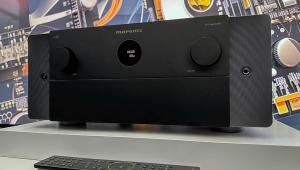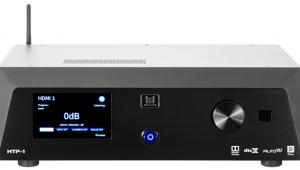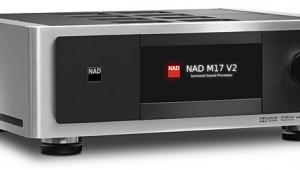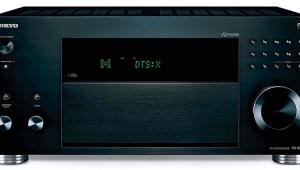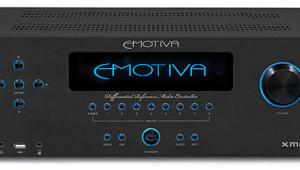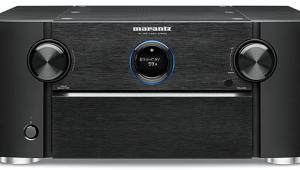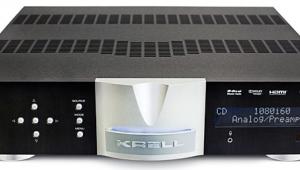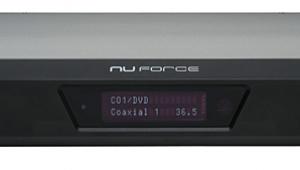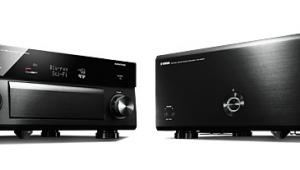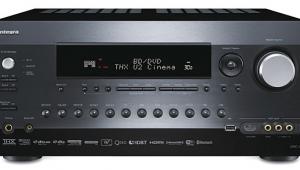Marantz AV7005 Surround Processor and MM7055 Amplifier
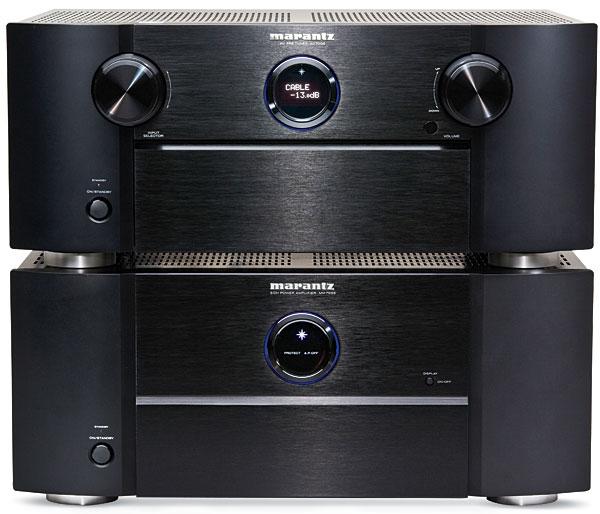
Everybody’s Been Burned
Are you weighed down by a boat anchor of an expensive, powerful, but obsolete A/V receiver that doesn’t have HDMI inputs or processing for the latest lossless audio formats? You’re not alone. Everybody’s been burned by fast-moving technological change. You could unload your boat anchor for a few hundred dollars on eBay or AudiogoN and start over. But should you? Consider that today’s cost-conscious race-to-the-bottom A/V receivers and even some separates seem to be getting cheaper but worse sounding, not better. But if Marantz’s AV7005 surround processor and MM7055 amplifier are as good as the hype suggests, this could be the way to go. And in case of future obsolescence, at least now you’re into separates, which makes upgrades a less pricey proposition.
Writing about home theater and tech isn’t exactly Moby Dick, but most of us try to inject some drama into the proceedings by building to a conclusive assessment. Marantz’s AV7005 is so good, it deserves an up-front conclusion: It’s among the most enjoyable pieces of A/V gear I’ve had the pleasure to use and review, regardless of price. And given the price, it’s a no-brainer Top Pick.
Why
For starters, all of the elegant-looking AV7005’s bells and whistles ring and tweet as promised. Its feature set is remarkably complete, it’s easy to set up and use, and it sounds good. On a 100-inch screen, its analog and digital upconversion to 1080p and overall video processing seem well accomplished, although the measurements might say otherwise. (See HT Labs Measures.)
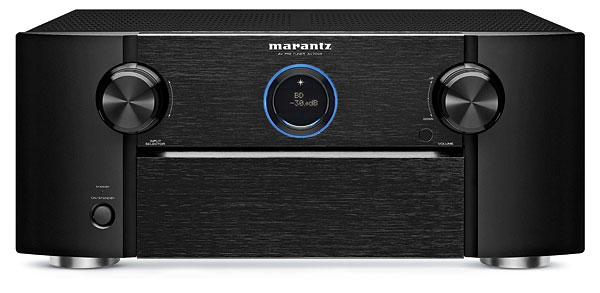
Aesthetically, the AV7005 looks great. It sports Marantz’s sculpted, black anodized faceplate and iconic round source and volume display encircled by a subtle blue LED ring. The AV7005 has been sitting on the top shelf of my A/V rack for weeks now, and I still enjoy looking at it. Behind the front-panel door, you’ll find a large, easy-to-read florescent display flanked by well-spaced buttons on one side and a round cursor control and more buttons on the other. HDMI, TosLink, USB, and old-school composite video and stereo analog inputs are arrayed across the bottom. A series of well-chosen rectangular push buttons is located above that. You won’t need the instruction manual to use the front-panel controls.
The backlit remote packs a lot of small buttons into a long, narrow space. Still, with its black backdrop, well-marked white buttons, and intuitive layout, I found it remarkably easy to use. For instance, the buttons that switch between the two HDMI outputs and between the digital and 7.1-channel analog passthrough are usefully placed near the top of the remote. Want to compare the output unequalized and through Audyssey processing? There’s a remote button for that.
The AV7005’s feature set is unusually complete and most likely beyond the capabilities of the rest of your current system. Its six HDMI 1.4a input jacks will pass 3D signals. One of the two HDMI outputs includes an HDMI Control function. This automatically turns a connected compatible display device on and off and returns its digital audio output to the surround processor. For example, you won’t need to run a long length of TosLink cable back to the AV7005 if you have an antenna connected to a television that’s on the other side of the room. Of course, your set must be HDMI Control ready (mine’s not).
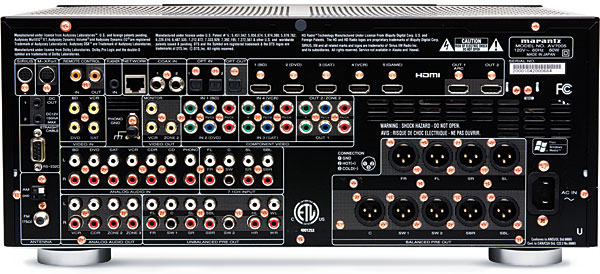
The 7.1-channel surround processor includes Audyssey DSX and Dolby Pro Logic IIz. These both offer height enhancement if you’ve got a pair of speakers installed above your main front speakers (I don’t). DSX also includes processing for a pair of width speakers (not going to happen in my living room). You can also use two of the available channels to biamplify the front speakers or do surround back channels, although with 7.1 channels, you can’t have it all (as if your significant other would let you).
The AV7005 is DLNA (Digital Living Network Alliance) 1.5 compliant. This means you can connect a LAN cable to the Ethernet port to access your PC’s media server (Windows only) and stream music and photos from your network-connected Windows computer. (My computer is a Mac, so I use Apple TV connected to an HDMI input, which does the same thing, but of course, it’s easier.)
An Internet-accessible firmware update ($50) allows Apple AirPlay compatibility for wireless connections to Apple iPhone, iPod touch, iPad, and PC and Mac computers. It accesses iTunes and streams content through the AV7005. You’ll be able to control it from any location within your network.
Access the Internet, and you can set up Pandora, Rhapsody, and Napster music accounts and Flickr photos, or listen to 14,000 pre-loaded vTuner Internet radio stations from around the world. Don’t get too excited, though. I tuned into a station from some exotic Arab city and got the same pop crap we get here.


